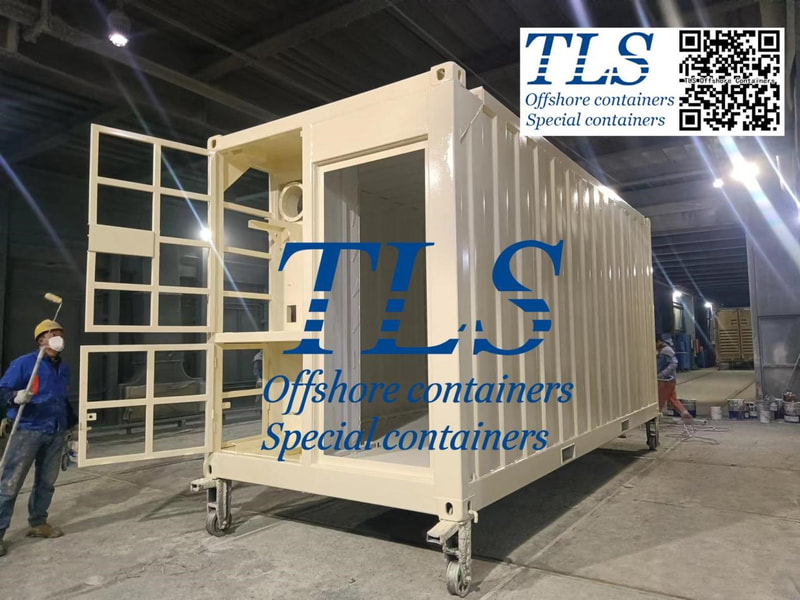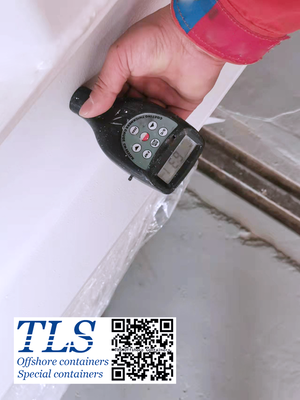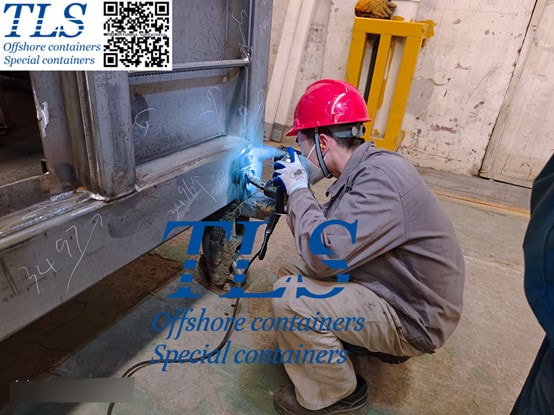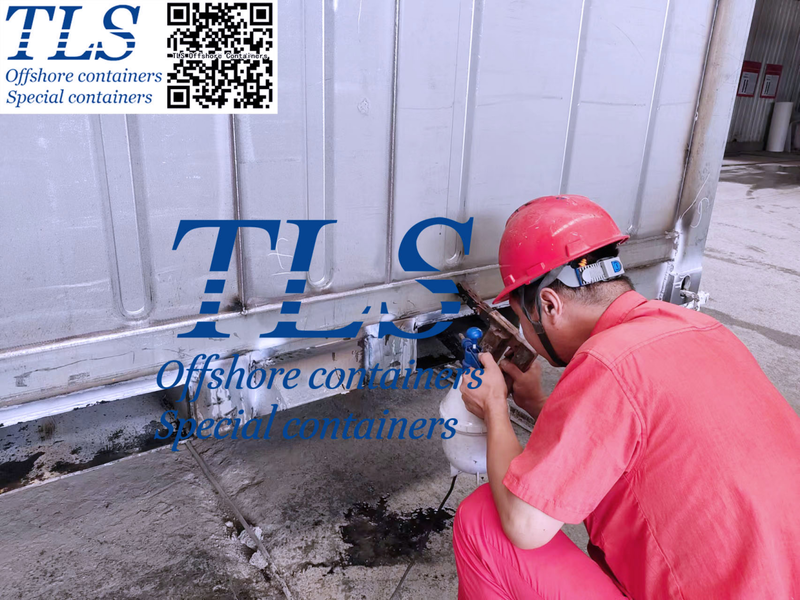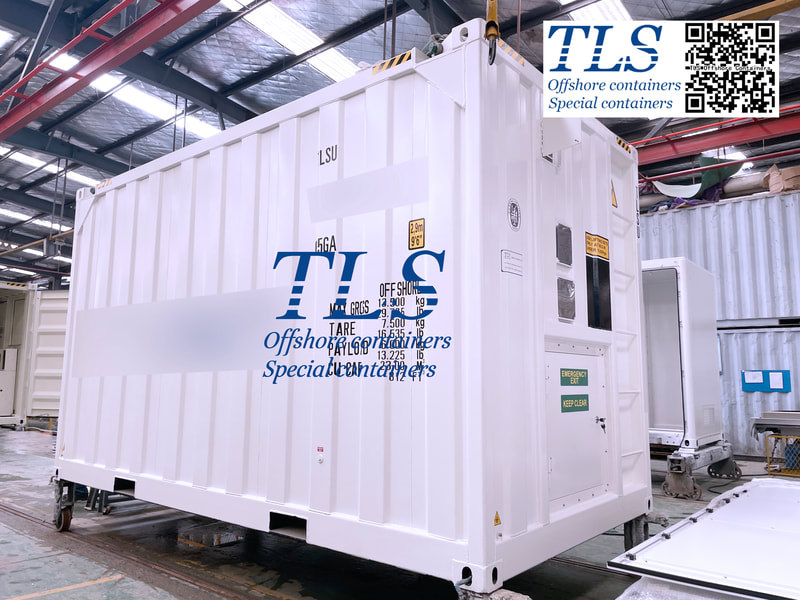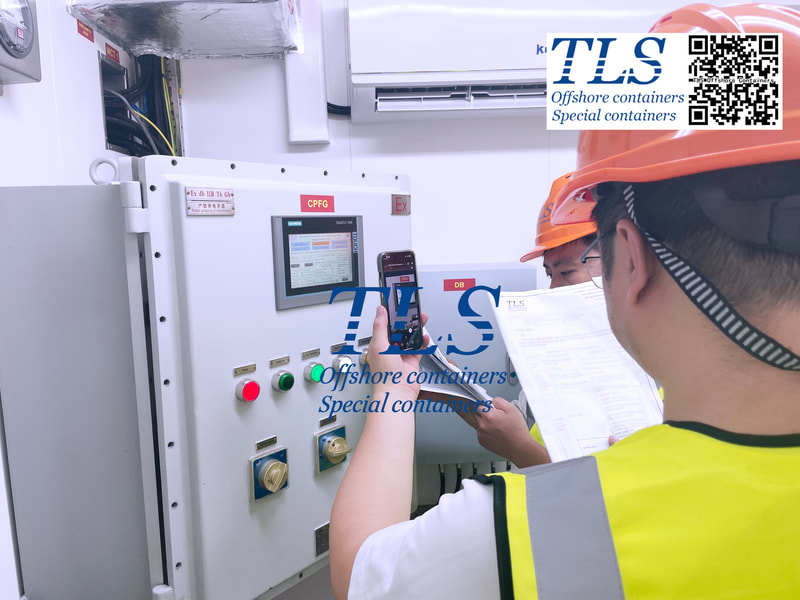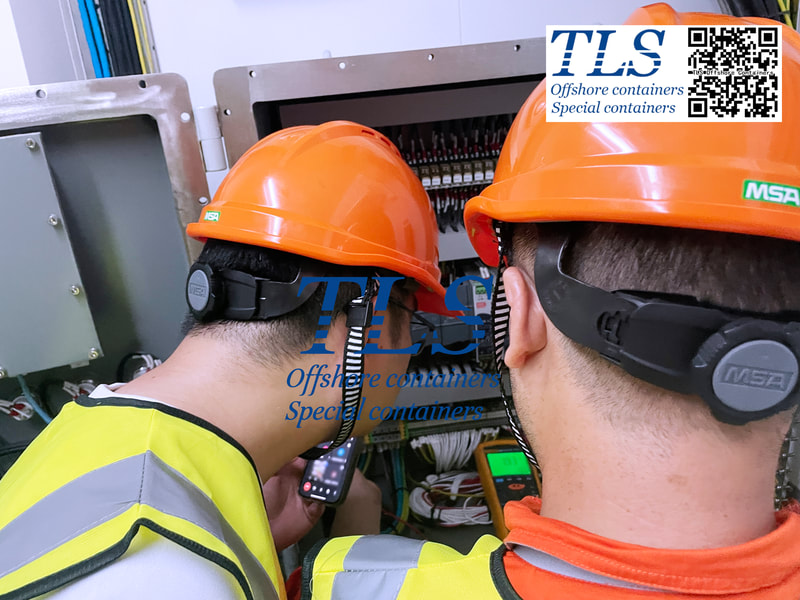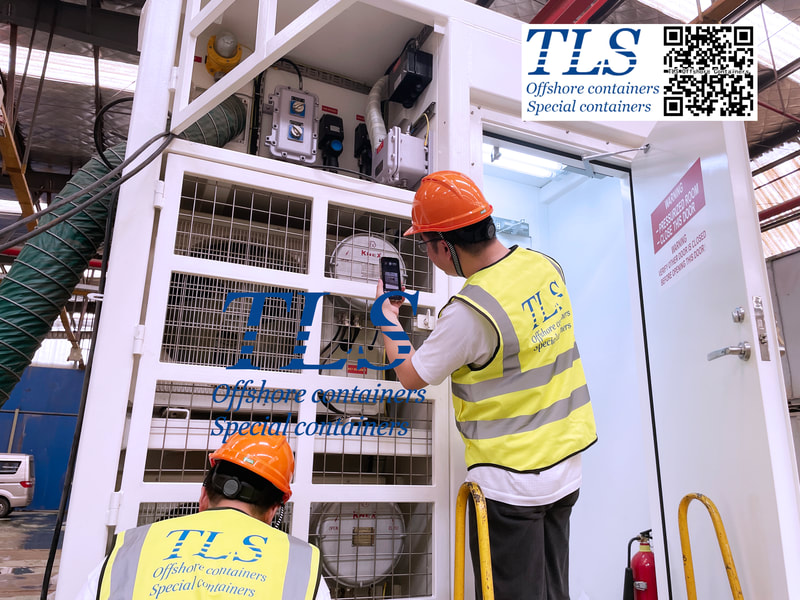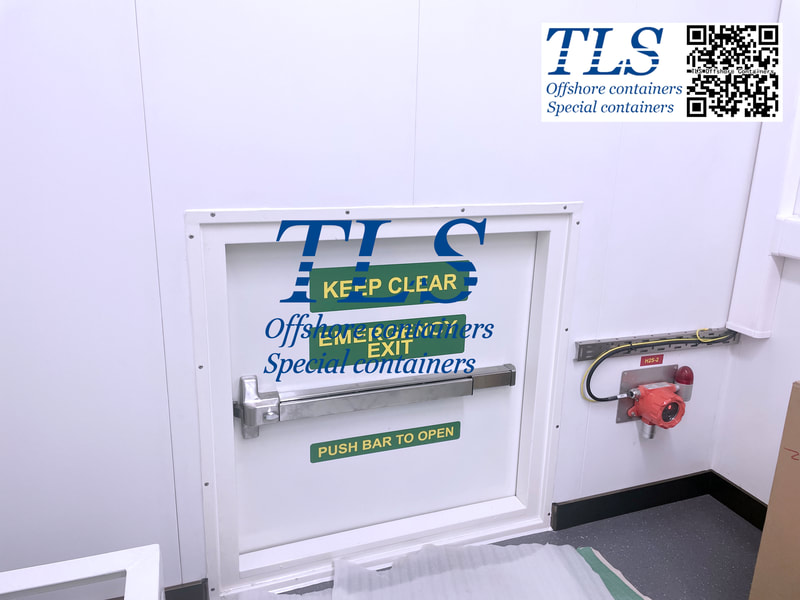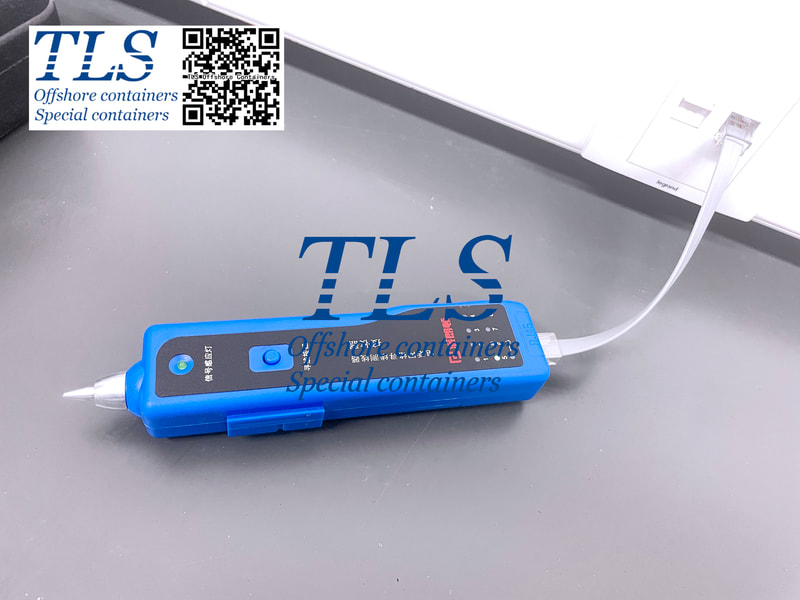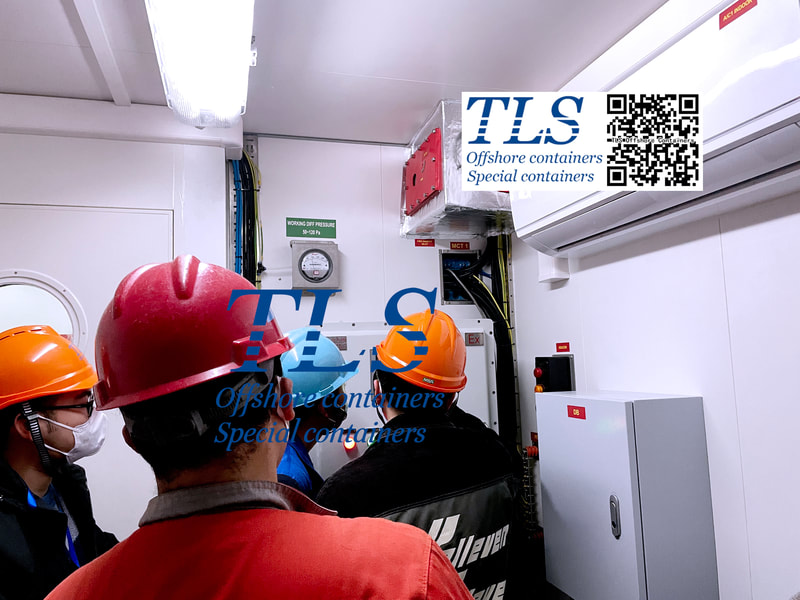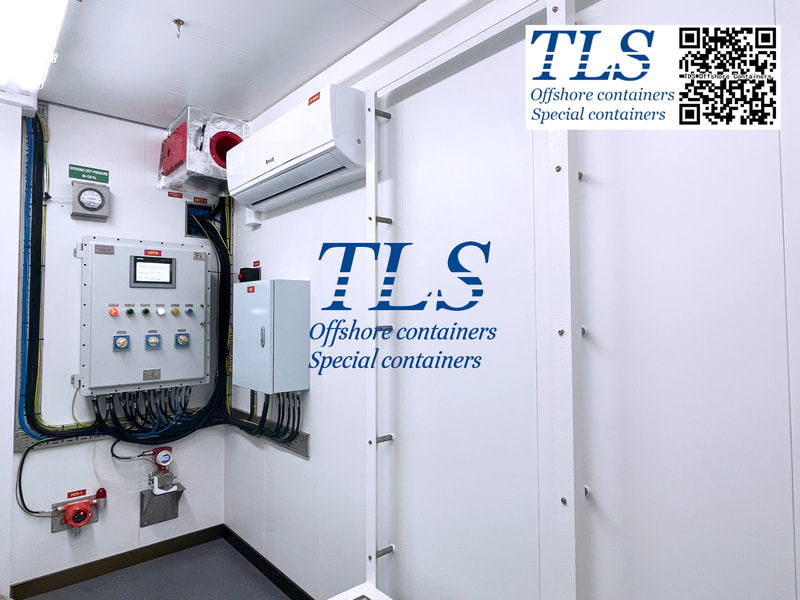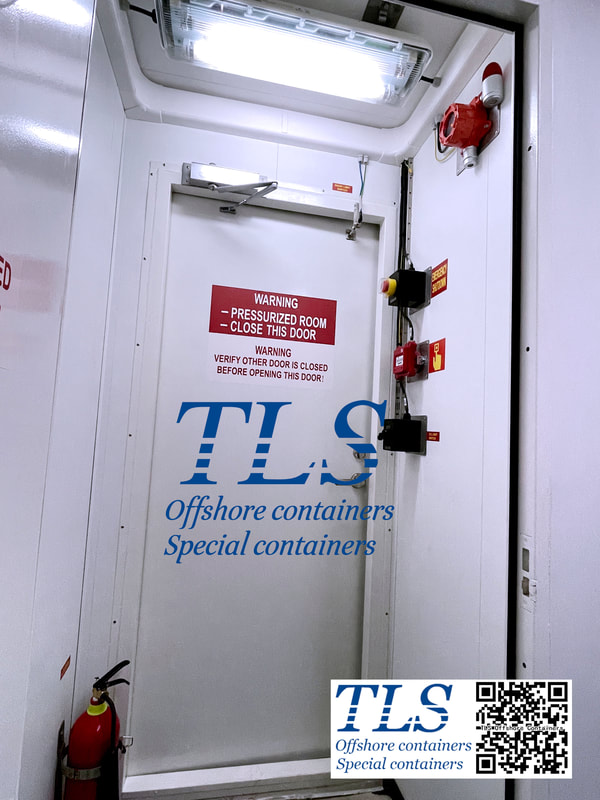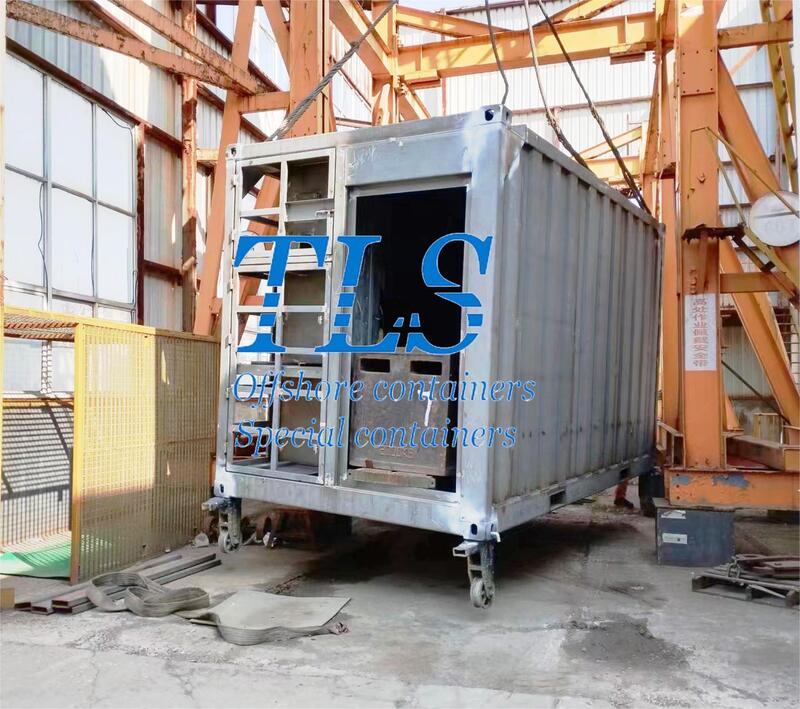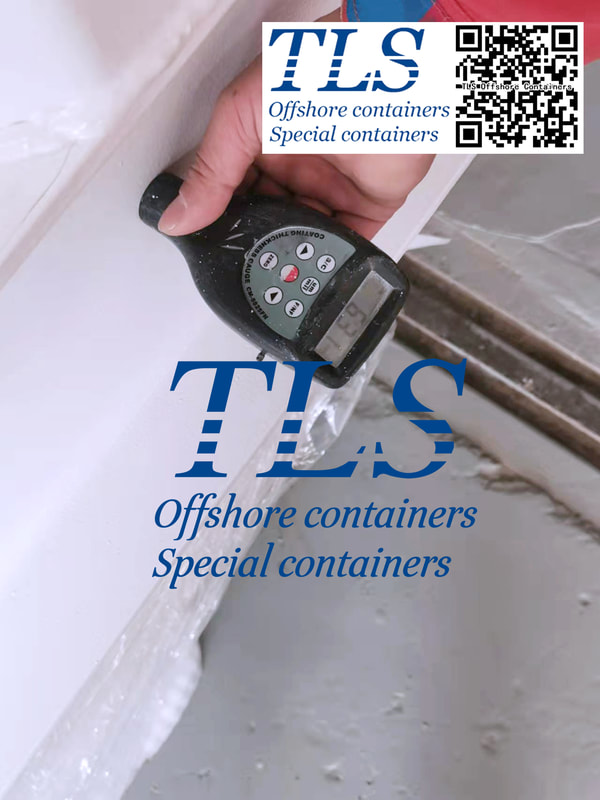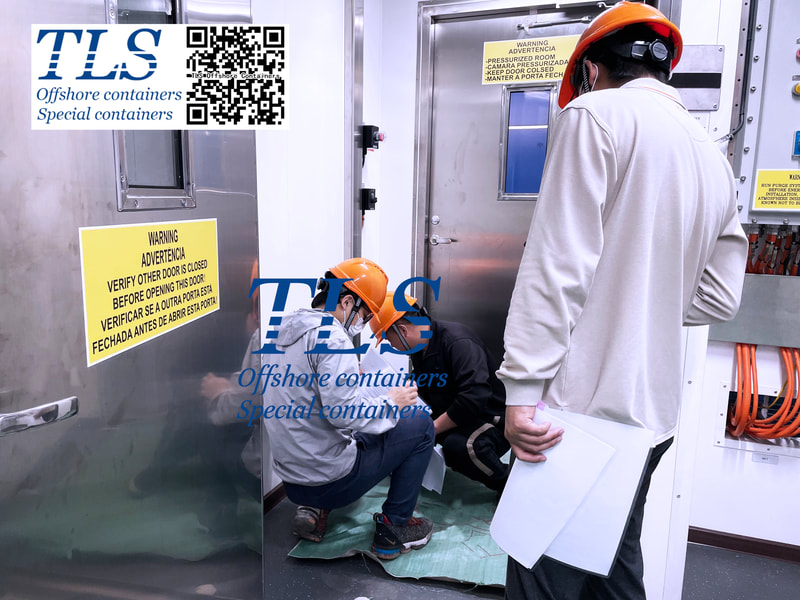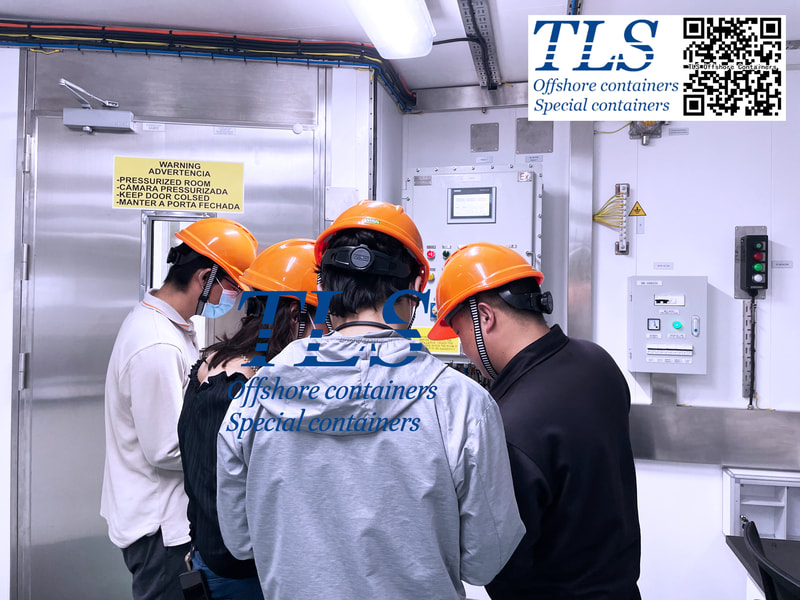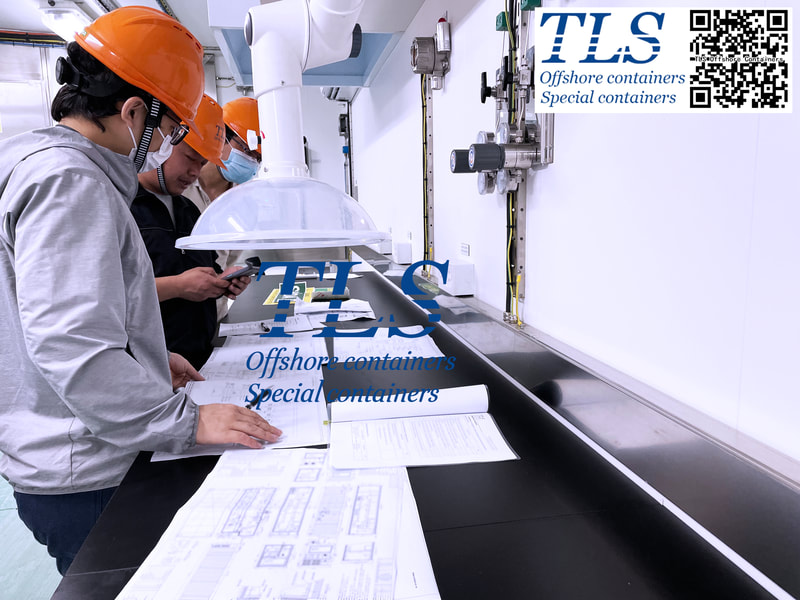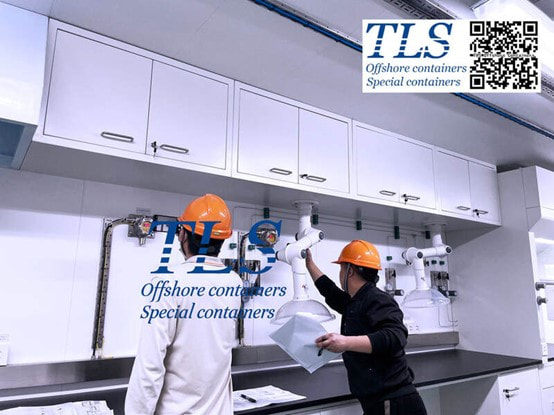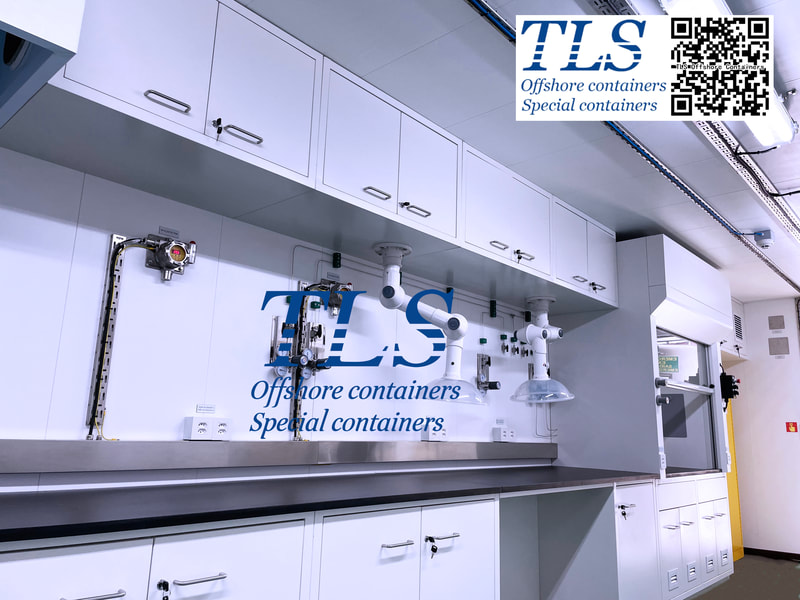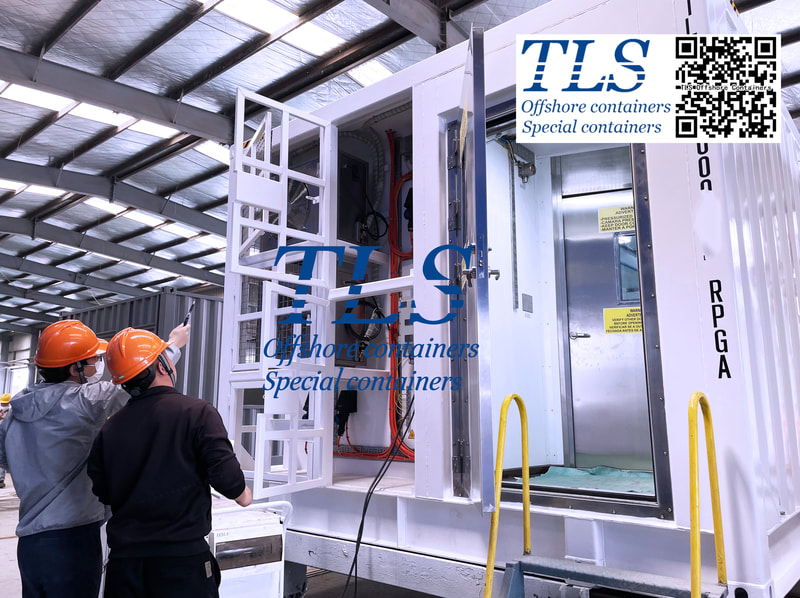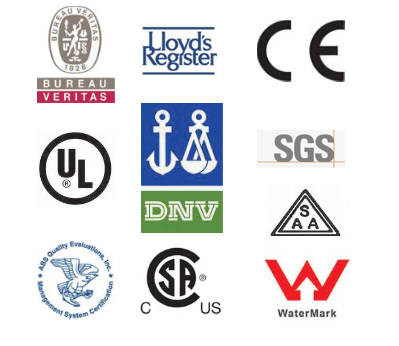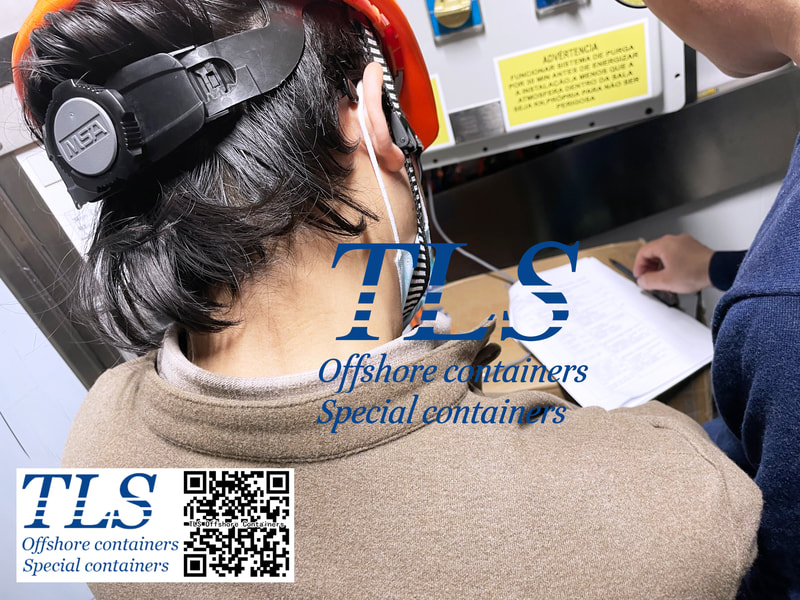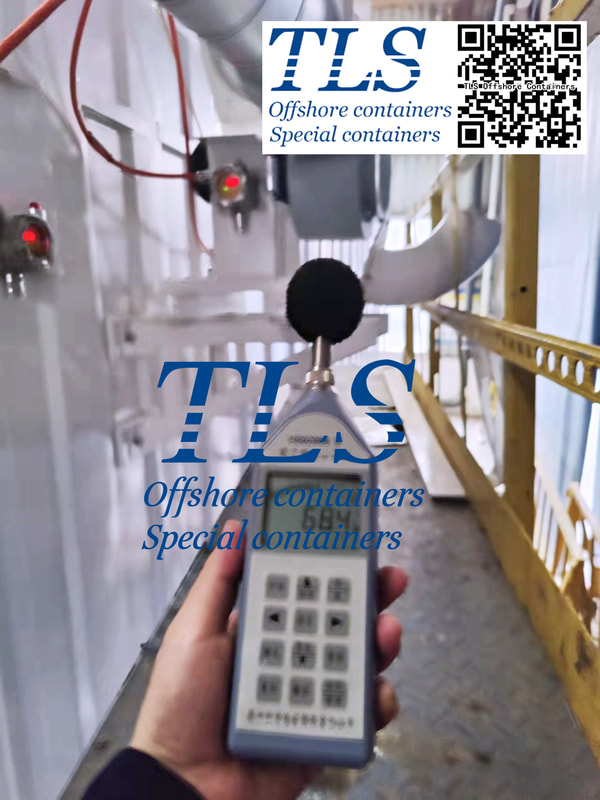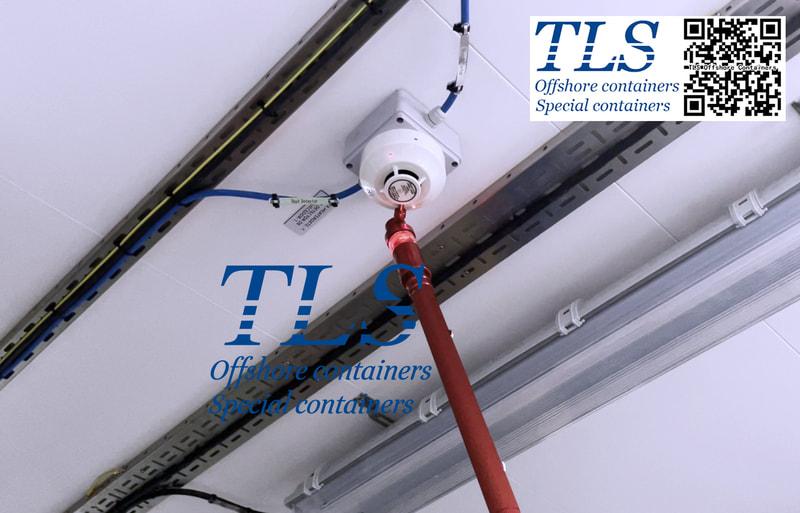|
In the challenging realm of offshore container transportation, ensuring robust corrosion resistance is paramount. Our streamlined process at TLS guarantees optimal anti-corrosion performance, tackling high temperatures, humidity, and salt spray.
In summary, TLS has perfected an optimized offshore container painting process, ensuring durability in harsh environments. The comprehensive approach involves meticulous surface preparation, precision shot-blasting, strategic pre-coating, flawless spray application, and accelerated drying. Using eco-friendly water-soluble paints and certified operators, TLS guarantees containers resistant to corrosion, paint failure, fading, and discoloration. Explore the TLS advantage for long-lasting and high-performance offshore containers. TLS Offshore Containers / TLS Special Containers is a global supplier of standard and customised containerised solutions. Wherever you are in the world TLS can help you, please contact us. Key words: #Offshore containers #Container painting #Anti-corrosion #Surface preparation #Corrosion resistance #Paint application #Eco-friendly paints #Water-soluble paints #Durability #Harsh environments Written by OliverIn various fields, specialized containers play a crucial role, ensuring structural stability and safety during transportation and use, from pressure vessels to experimental equipment and Modular Control Centers (MCC) shelters. The lifting and dropping test of specialized containers has become a pivotal step in ensuring their safe application across diverse domains. In this article, we will delve into the significance of the specialized container lifting and dropping test and its critical roles in different sectors.
In many industries, the use of specialized containers must comply with strict industry standards and regulations. Conducting lifting and dropping tests is a necessary step to meet these standards and regulations. Qualified specialized containers can obtain the necessary certifications, ensuring legal and secure usage. In summary, the lifting and dropping test for specialized containers is not just a routine procedure; it is a crucial means of ensuring safe application across various sectors. Through this specialized testing, specialized containers can be safely transported and used under various extreme conditions, providing reliable assurance for industries, ensuring both personnel and property safety. At TLS Offshore Containers, we are committed to providing excellent container products and outstanding services to our clients. We understand that when it comes to specialized containers, quality is your utmost concern. Therefore, we meticulously control every step to ensure our products meet the highest standards, fulfilling your expectations and requirements. For any container-related needs, please contact us. Container weld inspections are crucial to ensure structural integrity and safety. Among the non-destructive testing methods available, Magnetic Particle Inspection (MPI) stands out. This technique utilizes magnetic powders to reveal defects and discontinuities in ferromagnetic materials without causing any damage. The process of MPI involves magnetizing the ferromagnetic workpiece, which leads to localized distortions in the magnetic field lines when discontinuities are present. This results in a leakage magnetic field that attracts magnetic powders applied to the surface. When appropriately illuminated, these powders form visible indications, allowing for the identification of location, size, shape, and severity of any defects. For effective flaw detection, TLS employs black magnetic paste during MPI. This specific approach boasts high sensitivity in detecting even the smallest surface imperfections. The procedure comprises the following steps:
All our Quality Assurance personnel undergo rigorous certification examinations. At TLS, we uphold an unwavering commitment to product quality, delivering only after thorough confirmation that our offerings align with stringent quality inspection standards. TLS Offshore Containers / TLS Special Containers is a global supplier of standard and customised containerised solutions. Wherever you are in the world TLS can help you, please contact us. #Container weld inspections #Non-destructive testing #Magnetic Particle Inspection #MPI technique #Ferromagnetic materials #Defect detection #Discontinuity identification #Structural integrity #Safety standards #Surface imperfections Written by OliverWhat are the video inspections of explosion-proof pressure containers, which are usually checked?7/20/2023
During the video inspection of explosion-proof pressure containers, several critical aspects are thoroughly examined to ensure their safety and compliance with regulations. The inspection process includes the following key areas:
Check the functions of all modes, and the functional tests of all modes will be carried out one by one according to the regulations on the FAT file. Automatic mode: normal use in hazardous areas Bypass mode: can only be used in safe area Manual mode: for emergency use only In "bypass mode" and "manual mode", the explosion-proof fan can be started manually only when the air inlet and outlet valves are fully opened; when the air valve is not fully opened, the manual switch of the explosion-proof fan is invalid. TLS pays attention to every detail of the product, please feel free to contact us for any needs Positive pressure containers are essential safety equipment used in industries operating in explosive environments. Before these containers are shipped, several crucial preparations and tests are conducted to ensure their quality and functionality. This article provides insights into the pre-shipment preparations for positive pressure containers, giving you a better understanding of the measures taken to ensure a safe and reliable product.
Ensuring Safety and Reliability: Testing Standards for Offshore Containers and Lifting Equipment3/3/2023
The design and construction of offshore containers, as well as their lifting equipment, are subject to strict regulations and standards to ensure their safety and reliability in the challenging operating environment of offshore oil rigs. The DNV 2.7-1 and EN 12079 standards set out the requirements for the design, manufacture, testing, and certification of offshore containers, including their top corner piece structure and lifting equipment. To ensure that these containers are safe and reliable, a series of tests are conducted. These tests include: 1. All Point Lifting Test: This test involves placing a weight of 2.5R-T inside the container and measuring the deformation of the bottom frame while the container is lifted at all four corners for 5 minutes. After 5 minutes, the deformation of the bottom frame is measured. 2. Two-Point Lifting Test: In this test, the weight inside the container is reduced to 1.5R-T, and the deformation of the bottom frame is measured. 3. Fork Pocket Lifting Test (if applicable): If the container has fork pockets, this test involves adjusting the weight inside the container to 1.6R-T and measuring the deformation of the bottom frame while fixing the fork arm with angle pieces or jacking up the container and standing still for 5 minutes. For small containers, the container is directly lifted with a forklift and held still for 5 minutes, after which the data is recorded. 4. Vertical Impact Test: For this test, the weight inside the container is adjusted to the R-T state.To lift a container, appropriate shackles and wire rope slings should be installed on all four lifting points according to the design requirements specified in the drawing. The lifting point of the wire rope should be adjusted to ensure that the container is at a certain slope. When lifting the container, it should be unloaded quickly between the hook of the crane and the wire rope, and the container should be pulled by the rope to prevent it from swinging randomly. Once the container is lifted to the cement surface, adjust the tilt angle of the bottom side beam of the box by 5 degrees. The highest point of the bottom frame should not be higher than the lowest point by more than 400 mm. Make sure that the lowest point of the bottom frame is at least 5 cm away from the ground to operate the quick shackle, allowing the container to free fall. After the test is completed, inspect all structural parts of the container for any cracks or damage. The main purpose of the tests is to examine the impact of the lifting and placing of containers at sea to ensure that the cabinet can withstand the damage caused by the impact. Written by OliverUnlike ordinary dry cargo containers, which are primarily used for land transportation, offshore containers are specialized containers used on offshore oil rigs; Therefore, there is a well-established set of European standards for their design and manufacture, including DNV 2.7-1 and EN 12079.
Marine containers are mainly used on marine drilling platforms, where the operating environment is demanding and frequent hoisting is required, which places high requirements on container hoisting equipment. All four corners of the top of the container have a top corner piece structure. The top corner piece structure consists of a standard container top corner piece, a lifting lug, and a reinforcing piece. The uplifted ears are located on the inner side of the top horn, adjacent to it, and are arranged and fixed to it. The four-point or two-point lifting of a container can be performed by means of a hoist, and therefore there is a higher strength requirement on the hoist itself as well as on the top of the box in which the hoist is mounted. The lifted lug material must have low-temperature shock resistance properties. The reinforcing piece consists of a bottom plate for the lifting lug, and a coaming plate arranged on three sides of the bottom plate of the lifting lug. The setting of the coaming plate not only strengthens the lifting ear area but also protects the lifting ear. When lifted, a special sling is used, the shackles are passed through the eye holes and locked firmly, then the sling is lifted through the main ring of the sling. Compared with the design durability of C5-H of 15-25 years, the corresponding dry film thickness of C5-VH is 320μm, and the design life of C5-VH is over 25 years. Specific parameters are as follows:
TLS Offshore Containers/TLS Special Containers is a global supplier of standard and customised containerised solutions. Wherever you are in the world, TLS can help you. Please contact us. E-mail: [email protected] Hotline: +65-65637288; +65-31386967 Key words: #FPSO Application #Offshore containers #DNV271 certified containers #C5VH Painting The specially designed ultra-wide explosion-proof lab container|workshop container| Pressure container is about to be delivered. Our technicians are cooperating with various inspections from the end customer and SGS to ensure that the performance of the container meets customer standards and industry standards. TLS provides DNV2.7-1 standard | explosion-proof | which can be used in hazardous areas (ZONE 0, ZONE 1, AND ZONE 2) | special containers that meet A60 fire rating, we provide the independent certification from DNV | BV | LR | ABS | SGS. Any requirements, please contact us directly: E-mail: [email protected] Hotline: +65-65637288; +65-31386967 Key words: #DNV #BV #LR #ABS #SGS #DNV2.7-1 #ESS #BESS #A60 fire rating #explosion-proof #LAB # workshop container #TLS offshore containers The offshore laboratory container is undergoing overall performance testing. In order to ensure that all parameters meet the needs of customers, testing and adjustment with professional tools is one of the fixed processes for TLS to manufacture each positive pressure container | negative pressure container | lab container |workshop container. TLS is an international company that can customize onshore | offshore special containers for you. Any requirements, please contact us directly: E-mail: [email protected] Hotline: +65-65637288; +65-31386967 Key words: #pressurised container #ATEX #IECEx #offshore container #workshop container #TLS #explosion-proof #CPFG #air blower fan #Laboratory container #TLS offshore containers#noise test#temperature | smoke | test |
Archives
July 2024
Categories
All
|
- Home
-
Containerised solutions
- Intelligent pressurised container | MUD logging cabin
- Battery energy storage system (BESS) container
- Flexible grid tied battery storage system
- Laboratory container | workshop container | Equipment containers
- Temporary refuge shelter | Toxic gas refuge | Safe haven
- Offshore accommodation cabin | office container
- Reefer container | Refrigerated container
- Intelligent waste water treatment container
- Fresh water generator container
- Cargo Containers
- Product photos & videos
- News & Blogs
- Contact us
|
Featured products
Intelligent pressurised container Temporary refuge (TR) shelter, toxic gas refuge (TGR) Battery energy storage system (BESS) container Containerised waste water treatment plant Fresh water generator container Reefer container Laboratory container, Workshop container Accommodation container Offshore closed container |
All Rights Reserved 2020 © TLS Offshore Containers / TLS Energy
|

